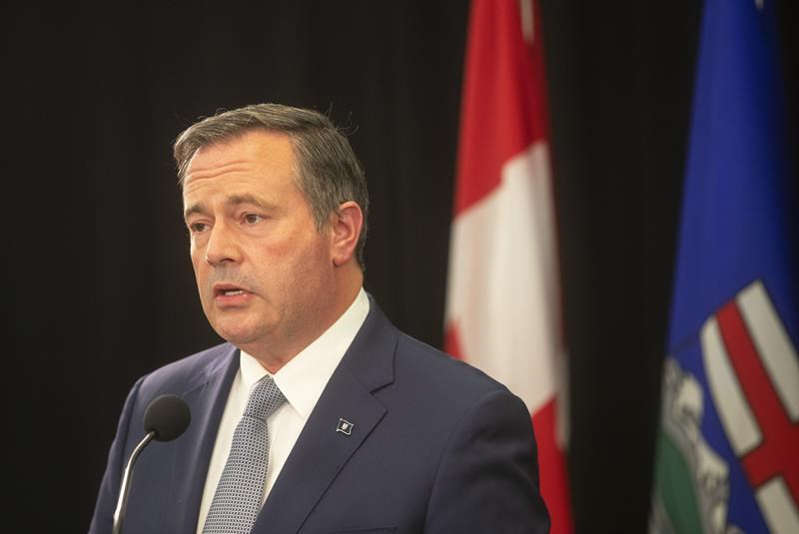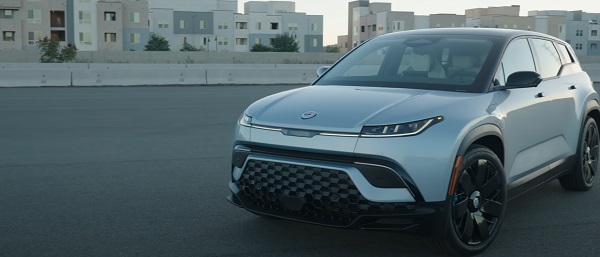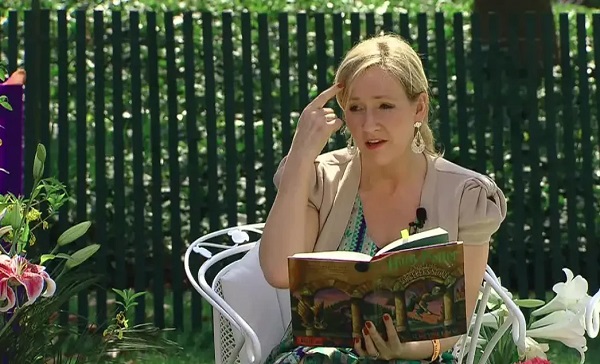Alberta
Canada’s equalization program is broken and requires major overhaul

From the Fraser Institute
By Tegan Hill and Nathaniel Li
Due to the “fixed-growth rule” introduced by the Harper government in 2009, the amount spent on equalization increases whether or not the gap between ”have not” and “have” provinces increases or decreases. For example, from 2007/08 to 2020/21, equalization payments increased by nearly 60 per cent despite the gap in fiscal capacities between richer and poorer provinces actually shrinking over that period.
As the Alberta Next Panel, which is tasked with assessing Alberta’s role in Confederation, reconvened last week, Canada’s equalization program remains near the top of the agenda. At the same time, the Alberta government is backing a legal challenge led by Newfoundland and Labrador arguing that the program does not achieve its intended purpose. While individuals may hold differing opinions on the program’s core principle—to ensure reasonably comparable public services delivered at reasonably comparable tax rates across the country—it’s clear that any reasonable assessment would find the current equalization system is broken.
Ottawa collects taxes from Canadians across the country then redistributes money to so-called “have not” provinces through equalization. To determine who gets money, the federal government calculates the “fiscal capacity” of each province—that is, a province’s ability to raise revenue. Basically, the formula applies a tax rate to different sources of income (including personal income, business income, resources, etc.) to determine how much revenue a province could generate. In theory, money from provinces with higher fiscal capacity (i.e. greater ability to raise revenue through taxes) is transferred to provinces with lower fiscal capacity.
This year, equalization payments will total a projected $26.2 billion. Seven provinces including Ontario, Quebec, Manitoba and all of Atlantic Canada will receive equalization payments. Alberta, British Columbia and Saskatchewan will not receive payments. Again, in theory, these three provinces have a greater ability to generate government revenue so they will not receive equalization.
But here’s the problem. Due to the “fixed-growth rule” introduced by the Harper government in 2009, the amount spent on equalization increases whether or not the gap between ”have not” and “have” provinces increases or decreases. For example, from 2007/08 to 2020/21, equalization payments increased by nearly 60 per cent despite the gap in fiscal capacities between richer and poorer provinces actually shrinking over that period.
If equalization is meant to close the gap between provinces, then the amount spent should reflect the gap. But the formula—and thus, the program—is broken.
More broadly, the principle of equalization—again, to ensure that all provinces can deliver reasonably comparable services at reasonably comparable tax rates—assumes that provinces with higher incomes (and a greater ability to generate tax revenues) will not receive equalization while provinces with lower incomes will receive equalization. Yet in 2020, for example, Newfoundland and Labrador, which received equalization, had higher income (measured by GDP per person) than B.C., which did not receive equalization. In 2018, Ontario had higher income than B.C., but Ontario was a recipient while B.C. was not. Clearly, there’s a problem with how the formula determines a recipient versus a contributing province.
Another problem is the treatment of subsidized electricity in Quebec and Manitoba. The Quebec government, for example, provides below-market electricity prices to Quebecers—even though charging the market rate would provide more revenues to Hydro Quebec, which manages the generation, transmission and distribution of electricity in the province. But the equalization formula only accounts for actual resource revenues and doesn’t account for this lower-than-market electricity rate in determining Quebec’s ability to raise revenues. In fact, an increase in Hydro Quebec’s profits of $100 million would result in a decrease in equalization payments of an estimated $70 million. Simply put, the equalization formula underestimates Quebec’s ability to raise revenue from its electricity provision while effectively penalizing provinces that don’t provide subsidies.
Ironically, the formula does not follow that same approach for Alberta, which has no provincial sales tax. Again, the formula accounts for Quebec’s actual resource revenue, not hypothetical resource revenue if Quebec charged market rates for its electricity. Yet the formula includes a hypothetical Alberta provincial sales tax when determining Alberta’s fiscal capacity. So, the formula does not penalize Quebec for foregone hydro revenues, but does penalize Alberta for foregone sales tax revenues. Quebec also bans fracking (as did Nova Scotia until lifting its ban), but the equalization formula does not apply any forgone hypothetical fracking-related resource revenue to Quebec. This inconsistency in the treatment of different types of revenue in different provinces is yet another sign of a fundamentally broken equalization system.
Reasonable people can debate the core principle of Canada’s equalization program, but as the Alberta Next Panel continues discussions, policymakers should recognize that the current system is badly broken and requires a major overhaul.

Nathaniel Li
Alberta
Jason Kenney’s Separatist Panic Misses the Point

By Collin May
Time was a former political leader’s expected role was to enjoy retirement in relative obscurity, resisting the urge to wade into political debate. Conservatives generally stick to that tradition. Ralph Klein certainly did after his term ended. Stephen Harper has made no attempt to upstage his successors. Yet former Alberta Premier Jason Kenney can’t seem to help himself.
From the boardroom of Bennett Jones, one of Calgary’s oldest law firms, Kenney recently offered his thoughts on the unspeakable horrors that await the province should it entertain a debate (perhaps even call a referendum) on separating from Canada. While dismissing Alberta separatists as a “perennially angry minority”, Kenney nevertheless declared a vote on separation would “would divide families, divide communities, divide friends for no useful purpose.” Business partnerships, church and community groups, even marriages and families would break apart, he warned, “shredding the social fabric of the province.”
It was a remarkable burst of untethered hyperbole, but it says more about the former premier than it does about the province he once led.
Kenney’s take on the history of Alberta separatism is telling. It’s a 50-year-old “discredited concept,” he said, whose acolytes “couldn’t get elected dogcatcher in this province.” Exhibit A in his analysis was Gordon Kesler, an Alberta rodeo rider and oil company scout who believed independence was the only way to save Alberta from Ottawa’s depredations. In a 1982 byelection, Kesler got himself very much elected as an MLA under the Western Canada Concept banner. He later lost in the general election to Peter Lougheed’s Progressive Conservatives, but Lougheed did not belittle Albertans for entertaining separatist notions. Instead, he asked for a mandate to fight Ottawa more effectively — and got it.
Kenney, by contrast, ridicules separatists while simultaneously painting them as an existential menace. Worse, he likens them to followers of Vladimir Putin and (perhaps even worse?) Donald Trump. “[I]f you just follow them on social media,” he claimed, one will quickly see that they cheered on Putin’s attack on Ukraine and Trump’s threat of making Canada the 51 st state.
Kenney’s latest intervention fits a pattern. As premier from 2019 to 2022, he could not resist trying to stamp out dissent. During the pandemic, he alienated political allies by dismissing their concerns about mandatory vaccines with contempt. He saw his ouster as UCP leader as the result of a Trumpian-inspired or “MAGA” campaign. UCP party faithful, however, said their rejection of him had far more to do with his top-down leadership style and habit of “blaming other people for the errors he made.”
What’s especially striking about Kenney’s separatist obsession is that he seems to understand as little about Albertans now as he did while premier. Albertans have long debated separation without the province descending into chaos. When Kesler won his seat, people talked about separation, argued its pros and cons, but couples were not running to their divorce lawyers over the issue and business partners were not at each other’s throats.
And there are legitimate reasons for concern about Canada’s social and political structure, as well as the role provinces play in that structure. Canada’s institutions operate largely on an old colonial model that concentrates power in the original population centre of southern Ontario and Quebec. This has not, and does not, make for great national cohesion or political participation. Instead, it feeds constant fuel to separatist fires.
The current threat to Canadian identity comes as well from the ideological commitments of our federal government. Early in his time as Prime Minister, Justin Trudeau declared Canada to be a “post-national” state. This sort of moniker is consistent with the popularly-designated woke doctrine that eschews the liberal nation-state, democratic procedures and individual freedom in favour of tribalist narratives and identity politics.
The obsession with post-nation-state policies has initiated the dissolution of the Canadian nation regardless of whether Quebeckers or Albertans actually vote for separation. We are all becoming de facto separatists within a dissolving Canada, a drift that current Prime Minister Mark Carney’s ineffective “elbows up” attitude has done nothing to reverse.
Kenney’s panicked musings about Alberta separatists would have us believe the province need only continue the fight for a better deal within the Canadian federation. Kenney pursued just such a policy, and failed signally to deliver. For too many Albertans today, his advice does not reflect the political reality on the ground nor appreciate the worrying trends within Canadian institutions and among our political class.
Kenney likes to associate himself with Edmund Burke, the father of conservatism and defender of venerable institutions. But Burke was known as much in his day for his sympathies with the American revolutionaries and their creation of an experimental new republic as he was for his contempt towards the French Revolution and its Reign of Terror. Burke’s conservatism still linked real actions with true words. It would be advisable, perhaps, to keep our own political language here in Alberta within the bounds of the plausible rather than fly off into the fanciful.
The original, full-length version of this article was recently published in C2C Journal.
Collin May is a lawyer, adjunct lecturer in community health sciences with the Cumming School of Medicine at the University of Calgary, and the author of a number of articles and reviews on the psychology, social theory and philosophy of cancel culture.
Alberta
Alberta Is Where Canadians Go When They Want To Build A Better Life

From the Frontier Centre for Public Policy
One in three Canadians chooses Alberta to start over. But to stay Canada’s top destination, it must fight Ottawa’s barriers and complacency
No province has captured the Canadian imagination quite like Alberta—and not because of oil.
One in three Canadians leaving their provinces in the past five years headed to Alberta. They were escaping stagnant wages, high housing costs and suffocating bureaucracy. They came for freedom and opportunity, and Alberta delivered. Its edge is cultural: it rewards enterprise instead of strangling it.
The question now is whether Albertans can keep that edge before Ottawa and complacency close in.
Prosperity, like liberty, vanishes the moment people stop fighting for it. If Alberta wants to remain Canada’s economic engine, it must continue to move forward, tearing down old barriers while fending off the new ones that Ottawa and other provinces are always erecting.
The cost of standing still is staggering.
Economists say provincial trade barriers (rules that prevent goods, services, and workers from moving freely) cost the Canadian economy up to $130 billion a year. For Alberta, even a 10 per cent reduction would be worth $7.3 billion a year.
When Quebec killed the Energy East pipeline that would have carried Alberta crude to eastern refineries, Alberta lost the chance to export oil worth as much as $15 billion annually.
That’s not theory. That’s lost paycheques, lost tax revenue and public services that never materialized.
Alberta has always been more willing than others to break free from the barriers that hold back growth. Liquor sales were privatized decades ago, as were property registries. The New West Partnership with Saskatchewan, Manitoba and B.C. opened labour mobility and procurement, though it has since stalled. Alberta doesn’t impose cultural tests and it doesn’t levy a provincial sales tax. Families arrive because life here is easier. They can work, start a business, raise kids or simply breathe without bureaucrats looking over their shoulder.
But cracks remain. Liquor shelves may be free, but the Alberta Gaming, Liquor and Cannabis Commission monopoly clogs the warehouse. Professional associations in law, teaching and health care are slow to recognize credentials and drown their members in red tape.
Procurement often tilts local, because, apparently, free markets stop at the city line. And like every other province, Alberta still bows to Ottawa’s anticompetition telecom rules, the dairy and poultry cartel and the banking oligopoly, systems that consistently benefit Quebec farmers and Bay Street lenders at Alberta’s expense.
And as if the old cracks weren’t enough, new barriers are appearing. One of the worst is protectionism. Canadians love mocking Donald Trump’s tariffs, yet happily embrace the same thing at home. “Buy local” sounds warm and fuzzy but props up cartels in groceries, banking, telecom and construction. The truth? We’ve imposed more barriers on ourselves than Trump ever dreamed of.
Prime Minister Mark Carney exemplified the problem when he promoted subsidies for canola farmers. It was a double insult. First, it showed Ottawa would rather hand out cash than negotiate hard. Second, it reminded farmers that the “help” isn’t free. They pay for it through their own taxes, scooped from Saskatchewan and Alberta, laundered through federal bureaucracy, then mailed back with a ribbon.
Carney also vowed that interprovincial barriers would vanish by July 1, 2025. That deadline came and went. His shiny new “process” for expediting infrastructure looks like more of the same: more Ottawa mediation that risks slowing everything down.
But it isn’t only economics standing in the way. Ideology is becoming a barrier of its own. Diversity, equity and inclusion has morphed into a system for entrenching gatekeepers. It compels people to think and act in ways they didn’t choose. It drains productivity, creates make-work compliance jobs and sorts people into categories. Worst of all, it punishes anyone who doesn’t conform. Alberta resists this infection better than most, but its universities and federally dependent agencies are already hooked.
Then comes debanking. In 2022, Ottawa showed how quickly it could freeze accounts, and banks complied without hesitation. Since then, regulators have only expanded their reach under the banner of anti–money laundering and climate policy. The message is blunt: if Ottawa decides your sector is undesirable, access to financial services can vanish. For Alberta, with its energy industry branded a planetary threat, this is no hypothetical.
A free economy is meaningless if citizens can be financially exiled from it by decree. Alberta must shield its people by turning ATB, its provincially owned bank, into a fortress institution and enshrining access to financial services as a civil right.
So what does moving forward mean? It means doubling down on being the most desirable province to live and work. That requires bold reforms. Cut regulators down to size. Protect banking access in law. Decentralize big-city governments to make them more accountable and give residents real choices. Reform health care to expand choice and slash wait times. Deregulate housing and trucking to lower costs. Confront public-sector unions that act as ideological monopolies.
Canada loves to brag about free trade, but governs like a feudal kingdom. Alberta has already shown that a freer path is possible. The task now is to resist cartels, fight the banks, tear down old walls and stop new ones from rising.
Alberta has always been a frontier of builders, risk-takers and prosperity seekers, and to thrive it must keep moving. If Alberta leads, it will stay prosperous and desirable. If it falters, doors will close.
The choice is clear: Alberta can either be strangled by regulations or break free and keep its frontier spirit alive.
Marco Navarro-Genie is vice-president of research at the Frontier Centre for Public Policy and co-author, with Barry Cooper, of Canada’s COVID: The Story of a Pandemic Moral Panic (2023).
-

 National14 hours ago
National14 hours agoCanada’s birth rate plummets to an all-time low
-

 Crime13 hours ago
Crime13 hours agoPierre Poilievre says Christians may be ‘number one’ target of hate violence in Canada
-

 Alberta12 hours ago
Alberta12 hours agoJason Kenney’s Separatist Panic Misses the Point
-

 Automotive15 hours ago
Automotive15 hours agoBig Auto Wants Your Data. Trump and Congress Aren’t Having It.
-

 Aristotle Foundation2 days ago
Aristotle Foundation2 days agoEfforts to halt Harry Potter event expose the absurdity of trans activism
-

 Bruce Dowbiggin2 days ago
Bruce Dowbiggin2 days agoCanada’s Humility Gene: Connor Skates But Truckers Get Buried
-

 Energy2 days ago
Energy2 days ago“It is intellectually dishonest not to acknowledge the … erosion of trust among global customers in Canada’s ability to deliver another oil pipeline.”
-

 Energy2 days ago
Energy2 days agoIn the halls of Parliament, Ellis Ross may be the most high-profile advocate of Indigenous-led development in Canada.




